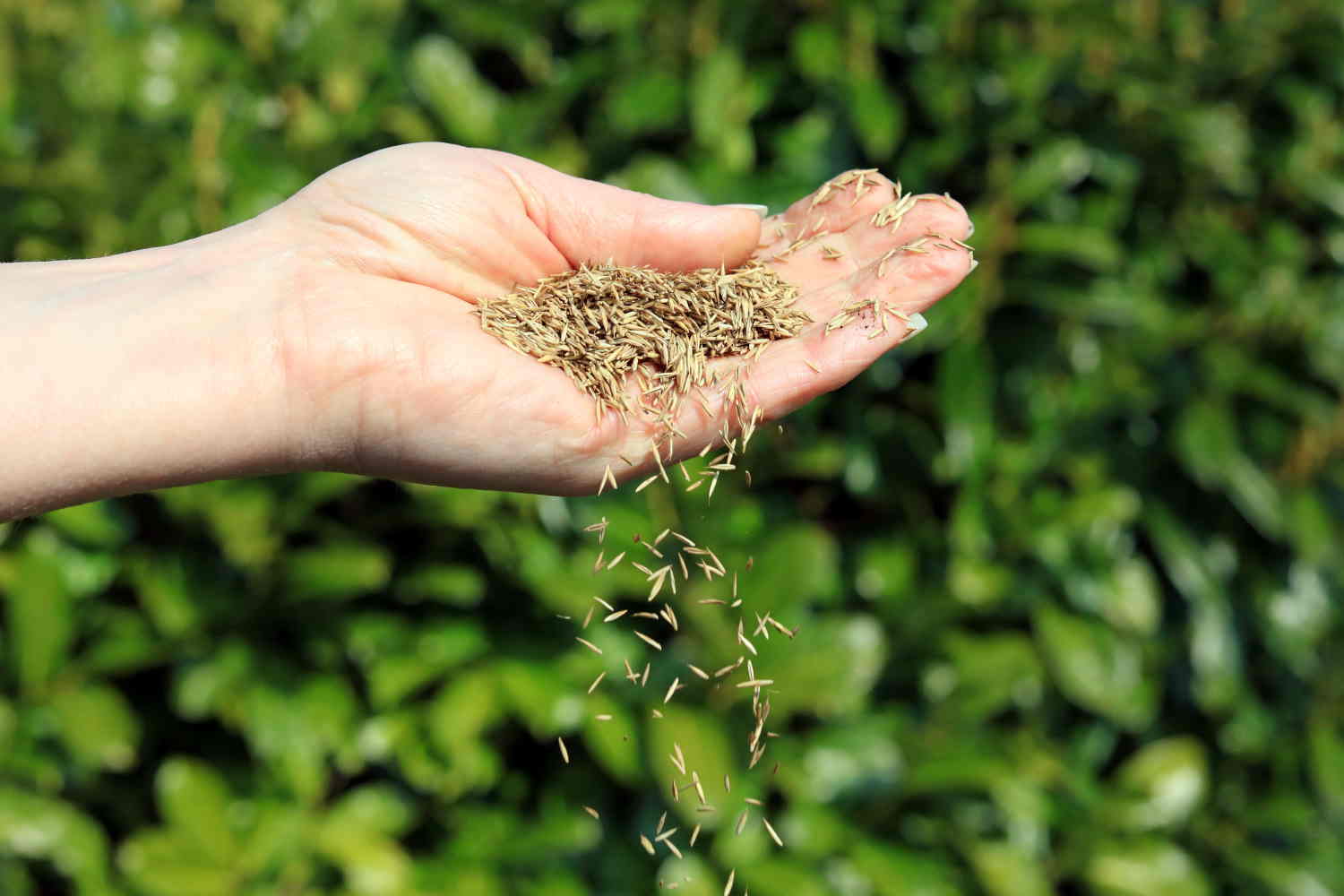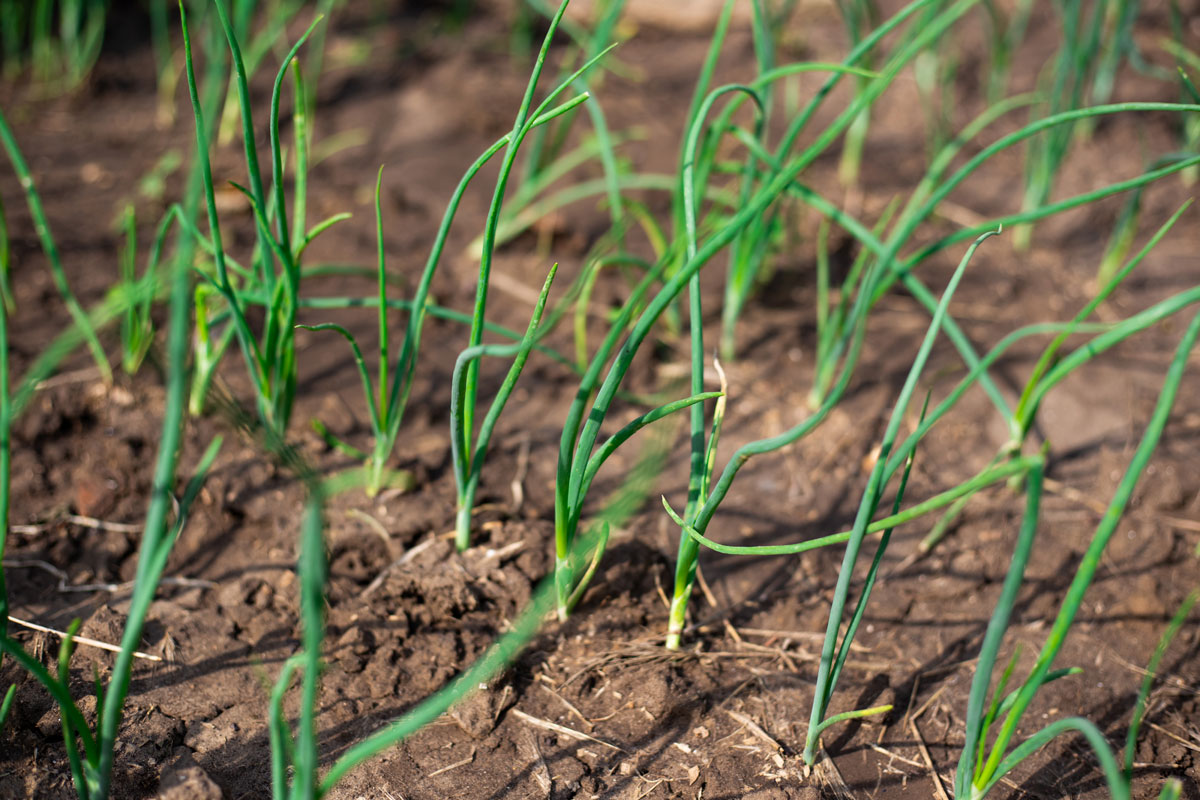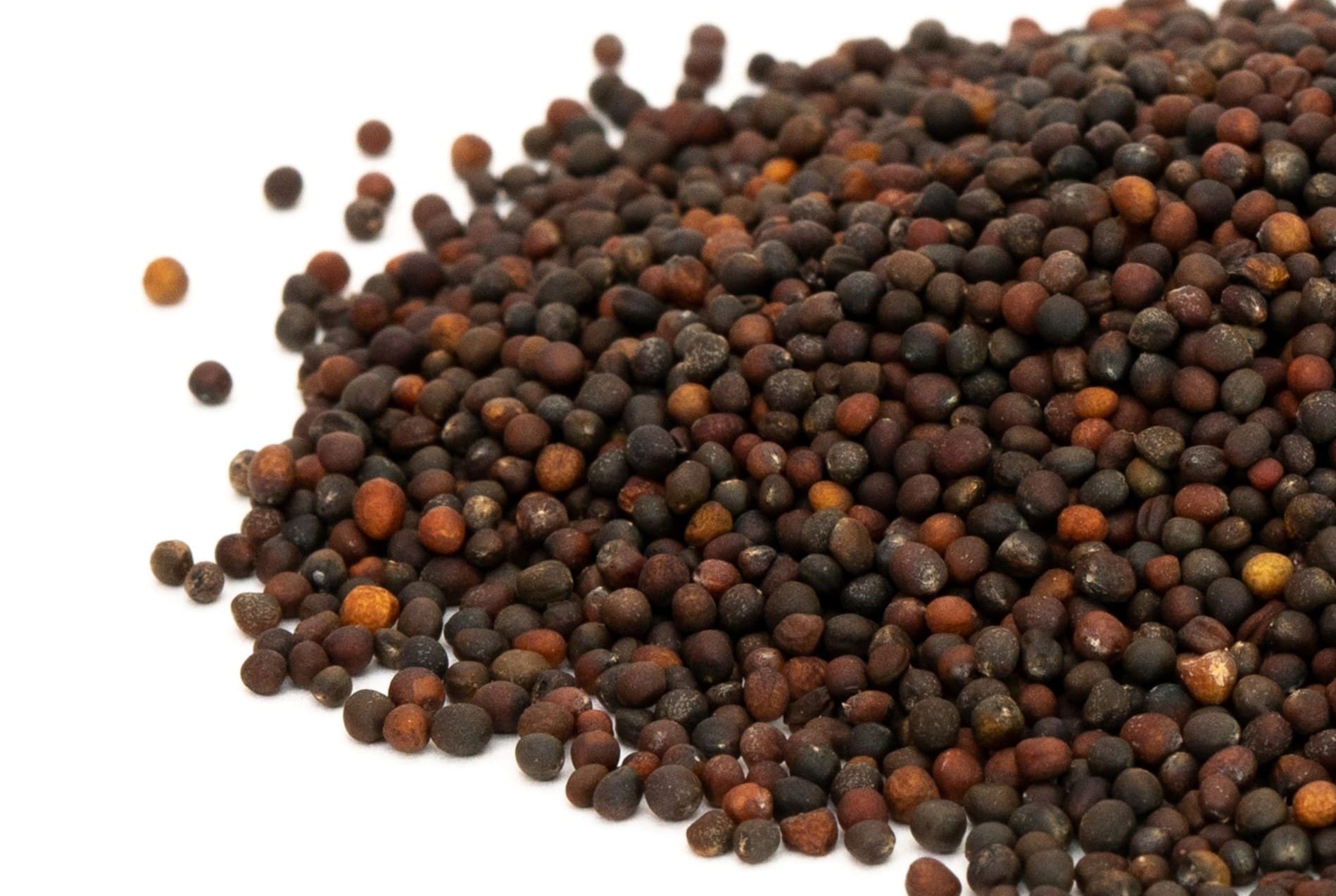Home>Gardening & Outdoor>Landscaping Ideas>When To Plant Grass Seed In The UK


Landscaping Ideas
When To Plant Grass Seed In The UK
Modified: March 24, 2024
Discover the best time to plant grass seed in the UK with our expert landscaping ideas. Ensure a lush, green lawn with our planting guide.
(Many of the links in this article redirect to a specific reviewed product. Your purchase of these products through affiliate links helps to generate commission for Storables.com, at no extra cost. Learn more)
Introduction
Landscaping can significantly enhance the visual appeal and functionality of any outdoor space, and one of the fundamental elements of a lush, green landscape is a healthy lawn. In the United Kingdom, where the climate can be quite diverse, planting grass seed at the right time is crucial to ensure the success of your lawn. Whether you're establishing a new lawn or renovating an existing one, understanding the optimal time to plant grass seed is essential for achieving vibrant and resilient turf. In this guide, we'll delve into the best practices for planting grass seed in the UK, taking into account the unique climate and environmental factors that influence successful lawn establishment. By the end of this article, you'll have a comprehensive understanding of when and how to plant grass seed to achieve a thriving and verdant lawn in the UK.
Key Takeaways:
- Plant grass seed in the UK during autumn for the best chance of success. The cooler temperatures and increased rainfall create ideal conditions for seed germination and establishment, leading to a vibrant and resilient lawn.
- Prepare the soil thoroughly before planting grass seed by testing, aerating, and addressing weeds. By following proper seeding and care practices, you can nurture a lush and enduring lawn in the UK.
Read more: When To Plant Seeds For Garden
Understanding the UK Climate
The United Kingdom is known for its variable and unpredictable climate, influenced by its proximity to the Atlantic Ocean and the presence of diverse topographical features. The UK experiences a maritime climate, characterized by mild temperatures, ample rainfall, and a relatively narrow temperature range throughout the year. However, regional variations in climate exist, with the north generally being cooler and wetter than the south.
One of the defining features of the UK climate is its year-round precipitation, which contributes to the lush green landscapes the country is renowned for. The moderate temperatures and consistent moisture provide an ideal environment for cultivating healthy lawns. However, the variability in weather patterns, including occasional droughts and extreme temperature fluctuations, can pose challenges for maintaining a resilient and vibrant lawn.
Understanding the microclimates within the UK is also crucial when considering the optimal time for planting grass seed. Coastal areas may experience milder winters and cooler summers, while inland regions might have more pronounced seasonal temperature variations. Additionally, urban areas tend to create heat islands, impacting local temperatures and growing conditions.
When planning to plant grass seed, it’s essential to take into account the specific climatic conditions of your location within the UK. By considering factors such as average temperatures, rainfall patterns, and microclimatic influences, you can make informed decisions to ensure the successful establishment of your lawn.
Best Time to Plant Grass Seed
Choosing the optimal time to plant grass seed in the UK is pivotal for nurturing a thriving lawn. The recommended period for sowing grass seed largely depends on the type of grass and the prevailing climate in your region. In general, the most favourable time for planting grass seed in the UK is during the autumn months, specifically from mid-September to mid-October. During this time, the soil remains warm from the summer months, while the cooler air temperatures and increased rainfall create favourable conditions for seed germination and establishment.
Autumn planting allows the grass seed to take advantage of the moisture from seasonal rainfall, reducing the reliance on manual watering. The milder temperatures also contribute to reduced evaporation rates, promoting better water retention in the soil. Additionally, the absence of competition from weeds, which tend to be less active in the autumn, provides the newly sown grass seed with an advantageous environment for growth.
While autumn is generally the preferred season for planting grass seed, spring also offers a suitable window for sowing, typically from mid-March to mid-April. During this period, the soil begins to warm up, and the increased daylight hours stimulate active growth. However, spring planting may necessitate more diligent watering, as the weather conditions can be drier, and there is a heightened risk of seedling desiccation.
It’s important to note that the best time for planting grass seed can vary based on the specific climatic conditions in your region. Coastal areas and northern regions may have slightly different optimal planting windows compared to inland and southern areas. Therefore, it’s advisable to consult local gardening resources or seek advice from horticultural experts to determine the most suitable timing for planting grass seed in your particular location.
Factors to Consider
When determining the ideal timing for planting grass seed in the UK, several crucial factors should be taken into consideration to ensure the successful establishment of a lush and resilient lawn. Understanding these key elements will enable you to make informed decisions and optimize the conditions for your grass seed to thrive.
1. Grass Species and Varieties
The selection of grass species and varieties plays a significant role in determining the appropriate planting time. Cool-season grasses, such as perennial ryegrass and fescues, are well-suited to the UK climate and are typically planted in the autumn. Warm-season grasses, like Bermuda grass, thrive in warmer climates and are best planted in the spring when soil temperatures are more conducive to germination.
Read more: When To Plant Blackberry Seeds
2. Climate and Weather Patterns
Understanding the local climate and weather patterns is essential for identifying the optimal planting window. Factors such as average temperature, rainfall distribution, and the likelihood of extreme weather events should be carefully assessed to determine the most favourable time for grass seed sowing in a specific region.
3. Soil Conditions
The condition of the soil, including its moisture content, pH levels, and nutrient composition, directly impacts the success of grass seed germination and establishment. Testing the soil and making any necessary amendments prior to planting can significantly enhance the growth potential of the grass seed.
4. Weeds and Pests
Consideration should be given to the prevalence of weeds and pests during different seasons. Planting grass seed at a time when weed competition is minimized can improve the chances of successful establishment. Additionally, understanding the life cycles of common lawn pests can aid in mitigating potential damage to emerging grass seedlings.
5. Maintenance Requirements
Assessing the maintenance demands associated with planting grass seed at different times of the year is crucial. Factors such as watering frequency, mowing schedules, and the need for weed control should be evaluated to determine the most practical planting window based on available resources and time commitments.
By carefully considering these factors and tailoring the planting time to align with the specific conditions and requirements of your lawn, you can maximize the likelihood of achieving a healthy and vibrant grass cover.
Read more: When To Plant Datura Seeds
Preparing the Soil
Proper soil preparation is a fundamental step in creating an optimal environment for successful grass seed germination and establishment. By addressing key soil factors and implementing necessary amendments, you can set the stage for a healthy and resilient lawn. Here are essential guidelines for preparing the soil before planting grass seed:
1. Soil Testing
Conducting a soil test is a critical first step in understanding the composition and characteristics of the soil. This analysis provides valuable insights into the pH levels, nutrient content, and overall soil structure, guiding the selection of appropriate amendments to create an ideal growing medium for the grass seed.
2. Soil Aeration
Aerating the soil helps alleviate compaction and promotes better air and water penetration, facilitating improved root development and nutrient uptake for the grass seedlings. Core aeration or mechanical methods can be employed to loosen the soil and enhance its overall porosity.
3. Weed Control
Prior to planting grass seed, it’s essential to address any existing weeds in the area. Implementing targeted weed control measures, such as herbicide application or manual removal, helps minimize competition and creates a more favourable environment for the newly sown grass seed to thrive.
Read more: When To Plant Gaillardia Seeds
4. Soil Amendments
Based on the results of the soil test, incorporating organic matter, such as compost or well-rotted manure, can enhance soil fertility and structure. Additionally, adjusting the pH levels with lime or sulfur as recommended by the soil test can create an optimal pH range for the grass seed to flourish.
5. Raking and Leveling
After addressing soil amendments and weed control, thoroughly rake the soil to create a smooth and level surface. Raking helps distribute amendments evenly and prepares the soil for seed sowing, ensuring good seed-to-soil contact for improved germination.
6. Fertilization
Applying a balanced starter fertilizer before planting grass seed can provide essential nutrients to support early growth. Selecting a fertilizer with a formulation tailored to new seedlings can promote vigorous root development and overall plant vitality.
By meticulously preparing the soil through these essential steps, you can establish an optimal foundation for successful grass seed germination and the subsequent development of a healthy and vibrant lawn.
Planting and Caring for Grass Seed
Once the soil is adequately prepared, the process of planting and nurturing grass seed requires attention to key practices that promote robust growth and long-term lawn health. From selecting the right seeding method to providing essential care during the germination and establishment phases, here are critical steps for planting and caring for grass seed:
Read more: When To Plant Elderberry Seeds
1. Selecting the Seeding Method
Choose a seeding method that aligns with the size of the area and the desired outcome. Whether using a broadcast spreader for larger areas or hand seeding for more precise coverage, the selected method should ensure even distribution of the grass seed across the prepared soil surface.
2. Seeding Rate and Depth
Adhere to the recommended seeding rate for the specific grass species and variety being planted. Ensuring proper seed-to-soil contact by seeding at the appropriate depth, typically 1/4 to 1/2 inch, contributes to successful germination and establishment.
3. Watering Practices
Consistent and adequate watering is essential during the germination period. Keep the seeded area consistently moist, but avoid overwatering, which can lead to seed displacement and potential fungal issues. As the grass seedlings emerge, gradually transition to a deeper and less frequent watering schedule to encourage deep root growth.
4. Monitoring and Maintenance
Regular monitoring of the seeded area is crucial to identify any issues early on. Addressing potential weed encroachment, adjusting watering practices based on weather conditions, and providing light fertilization as the grass seedlings develop are essential components of ongoing maintenance.
Read more: When To Plant Bermuda Seeds
5. Mowing and Establishing the Lawn
Once the grass seedlings reach a height of approximately 3 inches, it’s time to initiate mowing. Set the mower at a higher setting to avoid stressing the young plants, gradually reducing the mowing height as the lawn becomes established. Proper mowing practices contribute to the development of a dense and healthy turf.
6. Seasonal Care
As the lawn matures, seasonal care practices, including fertilization, aeration, and weed control, contribute to its long-term health and vitality. Tailoring care to the specific needs of the grass species and considering regional climate variations further supports the development of a thriving and resilient lawn.
By following these essential steps and providing attentive care throughout the germination and establishment phases, you can foster the growth of a lush and enduring lawn from the planted grass seed, creating a vibrant outdoor space for enjoyment and relaxation.
Conclusion
Planting grass seed in the United Kingdom is a rewarding endeavor that can transform outdoor spaces into lush, inviting landscapes. By understanding the unique climate, identifying the best time for planting, and considering crucial factors such as grass species, soil preparation, and care practices, you can set the stage for the successful establishment of a vibrant and resilient lawn.
The UK’s variable climate, characterized by mild temperatures and consistent moisture, offers an ideal setting for cultivating healthy lawns. However, the timing of grass seed planting plays a pivotal role in leveraging these favourable conditions for optimal growth. Whether sowing in the autumn to take advantage of seasonal moisture and reduced weed competition or planting in the spring to capitalize on increased daylight hours, aligning the planting time with the specific requirements of the grass species and the local climate is essential.
Thorough soil preparation, including testing, aerating, and amending the soil, sets the groundwork for successful grass seed germination and establishment. Careful attention to seeding methods, watering practices, and ongoing maintenance further supports the development of a vibrant and enduring lawn. By tailoring care to the evolving needs of the grass seedlings and the established turf, you can nurture a healthy and resilient landscape that enhances the aesthetic and functional appeal of outdoor living spaces.
Ultimately, the process of planting and caring for grass seed in the UK is a harmonious blend of science and art, where environmental considerations, horticultural knowledge, and attentive stewardship converge to create vibrant and inviting lawns. By embracing the guidance outlined in this article and adapting it to the unique characteristics of your local environment, you can embark on a journey to cultivate a thriving and verdant lawn that enriches your outdoor experience and provides a welcoming backdrop for leisure and recreation.
With a comprehensive understanding of when to plant grass seed and the essential practices for nurturing its growth, you are well-equipped to embark on the journey of creating a vibrant and enduring lawn in the United Kingdom.
Frequently Asked Questions about When To Plant Grass Seed In The UK
Was this page helpful?
At Storables.com, we guarantee accurate and reliable information. Our content, validated by Expert Board Contributors, is crafted following stringent Editorial Policies. We're committed to providing you with well-researched, expert-backed insights for all your informational needs.











0 thoughts on “When To Plant Grass Seed In The UK”